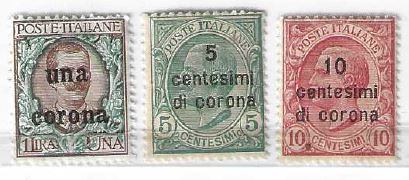The area known as Dalmatia has undergone many changes over the centuries. It has generally been located on the western coast of the Balkan Peninsula, across the Adriatic Sea from Italy. Its recorded history began in 180 BC when it declared itself independent from the king of Illyria. A few years later it was attacked for the first time by the Roman army. By 9 AD it had become a part of the Roman Empire.
Over the years the general area experienced many changes, from many Slavic tribes moving in, to the Byzantine Empire beginning to fail, to Venice and Hungary taking more control, to the wars with the Ottoman Empire, to the Hapsburgs of Austria-Hungary taking control.
During World War I the Italians eventually joined with the Allies, although how much they contributed to the war effort is in doubt. When the war ended, the Hapsburgs lost much of their territory since they were on the losing side. Italy demanded control of the entire Adriatic coastal area. However, the U.S. and others were against it. The entire area then nominally became part of the new country of Yugoslavia. However, the Italians were not ready to give up their claims, so their military occupied an area along the coast that had been part of Dalmatia, running roughly from Zadar in the north, through Split in the central, and down to Dubrovnik in the south. They then surcharged Italian stamps with the local currency and used them in the area from 1919 to 1922. Italy then annexed that area as part of Italy and issued Italian stamps, although it was supposed to be part of the new Yugoslavia. Following World War Ii Tito took over Yugoslavia, Dalmatia became the coastline of Croatia, and the era of the Italians in the Balkan Peninsula was over.
Below are examples of the stamps surcharged for Dalmatia. The total number issued is only 14, made up of 8 regular issue, 2 special delivery and 4 postage dues.




